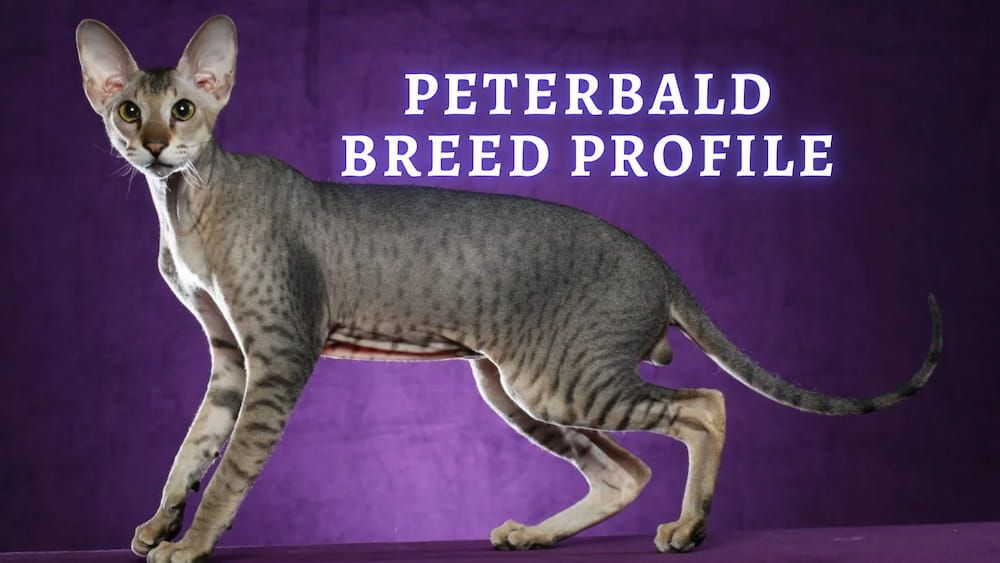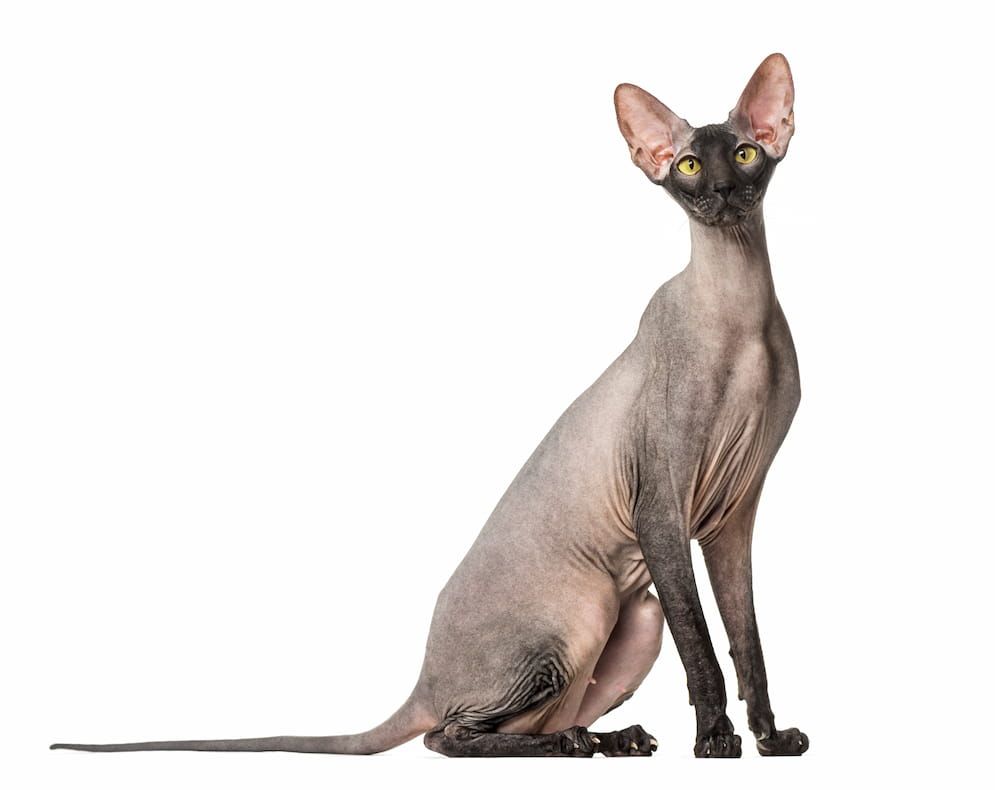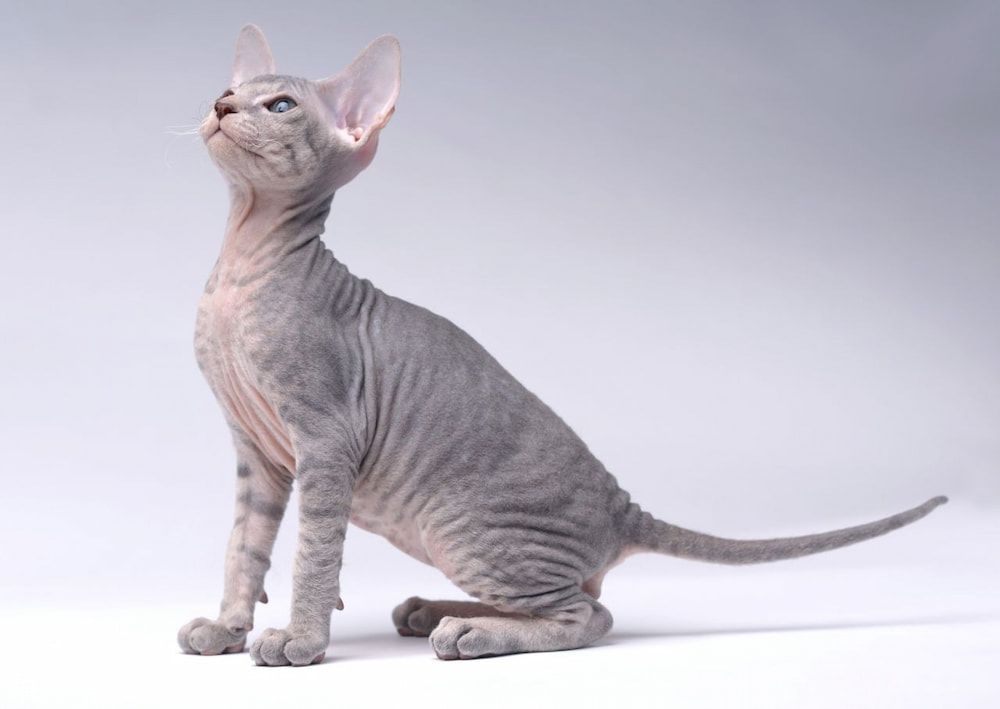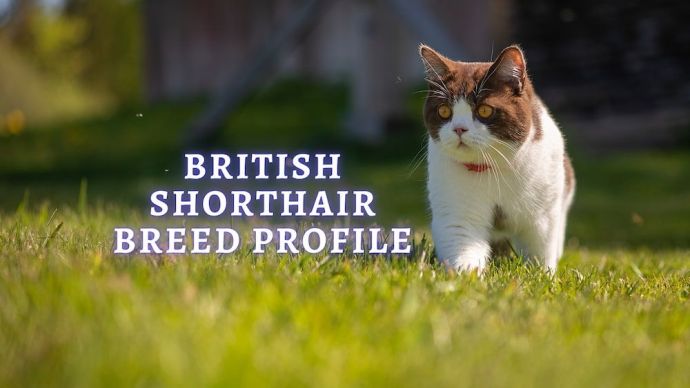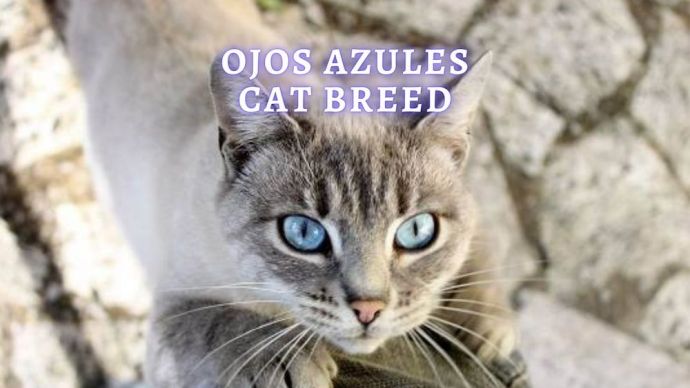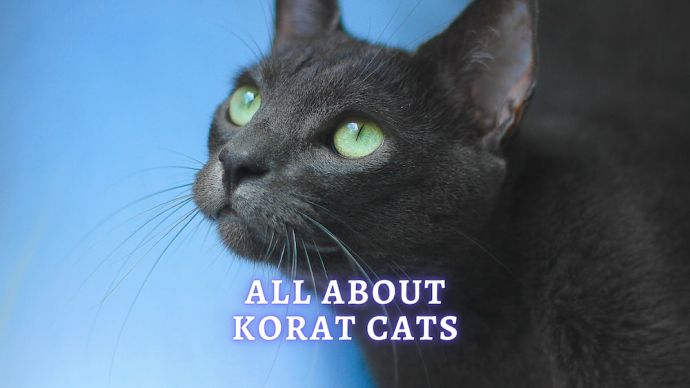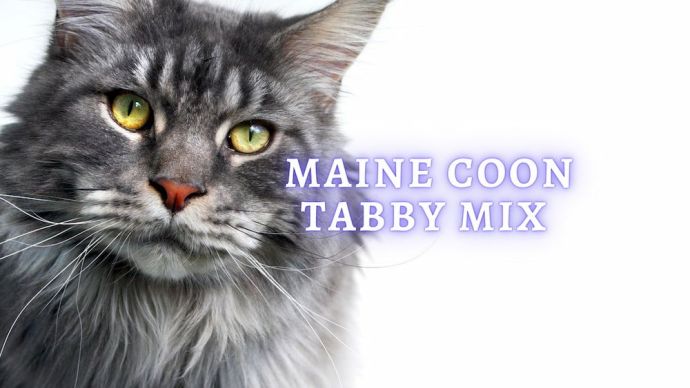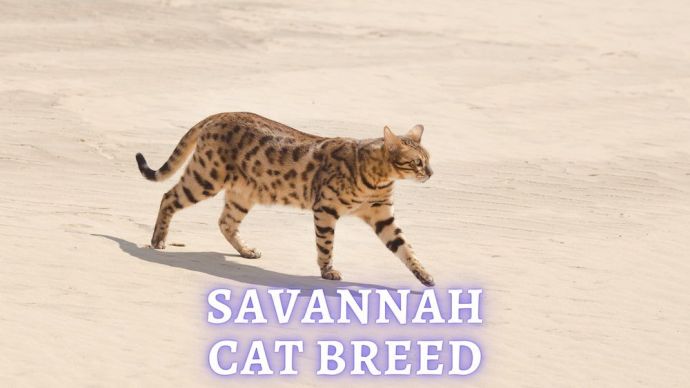Peterbald Cat: Breed History, Personality, Adoption, Cost
Written by:
Author: Vicki Smirnova
Vicki Smirnova is a professional writer and editor who adores animals and helps readers get along well with their pets. She has been working in digital media for more than 5 years and has great experience writing content about lifestyle, including pets. Vicki specializes in dog health and nutrition, cat feeding, dog training. She is an aquarium lover and is passionate to write about fish care at home. Also, Vicki headed several websites and worked as a news editor.
View all 245 articlesLearn about our editorial process and veterinary review board.
Viewed: 2158
Updated on: 10/05/2022
The Peterbald cat is not your usual fuzzy kitten that sleeps lazily on the couch all day long. On the contrary, this hairless feline is a lovable, affectionate cat with a knack for games and a quenchless desire for cuddles.
Despite its aloof appearance, the Peterbald cat is a very friendly and social pet. To some, a Peterbald may seem clingy. To pet lovers, she will seem like a cheerful puppy’s personality stuck in a pet’s body.
Characteristics
| Weight | 7-14 pounds |
| Height | 8-10 inches |
| Colors and Patterns | All colors and patterns |
| Lifespan | 12 to 15 years |
Breed History
The Peterbald cat is a new breed in the world of domestic felines. The first specimen saw the light of day in St. Petersburg, Russia in 1994. It was there and then that an experienced breeder, Olga S Mironova, managed to cross a hairless Donskoy with an Oriental Shorthair. The result was a Sphynx-like kitten with a cute face and an insatiable need for affection.
It wasn’t until 1996 that the Russian Selection Feline Federation accepted the a pet of this breed as a distinct breed of felines. In the coming years, almost every cat association in the world validated its presence, such as Fédération Internationale Féline [1] and World Cat Federation [2].
Nowadays, the Peterbald is an increasingly popular breed. Simply put, this kitten’s lovable personality is impossible to resist. As we speak, many cat parents across the world are looking to introduce a Peterbald to their household.
Interesting Facts
- Contrary to other breeds, the Peterbald pet’s fur may change color and texture naturally and several times over the years. So, your newborn kitty’s coat could look different when she becomes an adult.
- Peterbald felines come in five types of coat. The most common one is the straight type, which is similar to the hairless Donskoy. However, you may also get a Peterbald with a velour, brush, flock or chamois coat, and even one completely bald.
- Similar to other bald/short hair cats, the Peterbald is easily susceptible to colds. Therefore, you will have to get your kitten used to wearing cozy, snuggly sweaters from an tender age.
- Peterbald kittens can manipulate toys and other small objects similarly to primates. This is possible thanks to the webbing present between their very long front toes.
- The Cat Fanciers Association (CFA), the world’s largest cat organization, has recognized this cat from St. Petersburg, Russia as a rare pure-bred or “pedigreed” domestic cat breed.
- Many confuse the Peterbald cat for other feline breeds, such as the Sphynx. However, this kitten is quite different from other bald cats, especially when it comes to its excessive friendliness.
- The Peterbald doesn’t require brushing since its coat is very short or nonexistent. However, she will need the daily wipe downs and weekly baths to stay clean and healthy.
- Cat Peterbald has a high metabolism, which is necessary to keep her hairless body warm. For this reason, this breed is likely to overeat. So, you should avoid feeding her too much to prevent obesity.
- A pet of this breed loves attention and can never get enough cuddles. Also, she is playful and sociable with other pet breeds or different domestic animals.
READ MORE: Signs Your Cat Loves You
Temperament and Personality
If you want your next cat to be a flocculent fluff ball, the Peterbald may not be your first choice. However, if you are looking for an outgoing, athletic, and full of pep kitten, then this Russian-born breed should be perfect for you.
Peterbald kittens may look a bit uninviting at first. After all, their bald coat is not the most pettable in the domestic cat spectrum. Nevertheless, once you get to meet them, you are guaranteed to fall in love.
A Peterbald cat is generally affectionate, cuddly, and playful. You will find that she is always looking for your presence, regardless of what you’re doing around the house.
You may find that Peterbald cats make for excellent house pets. For instance, they have a high degree of tolerance and patience. So, they make a great companion for children and other pets.
If there is one downside to the a pet of this breed, it would be its constant starving for attention. Mind you, once you get this pet into your home, you will never have a single “alone moment” ever again.
READ MORE: 8 Reasons Why Your Cat is Clingy
These kittens can get underfoot and annoy for people who like to be left alone most of the time. However, they can also easily get under your skin. So, if you’re lonely, a Peterbald can make that bitter solitude a thing of the past.
Peterbalds have different coat lengths and patterns. The shorter the hair is, the more care and regular bathing the pet will need. For instance, the bald type needs careful bathing so that the oils that build up naturally on its skin do not trigger irritations.
Peterbalds are sensitive felines that do not fare well with extreme temperatures. For once, freezing temperatures may cause them terrible colds. On the other hand, too much sunlight can result in painful sunburns.
Lastly, a a pet of this breed is not your average hairless cat when it comes to intelligence. This breed produces brainy specimens, who are easy to train and engage in fun, complex games.
| Potential for playfulness | 5 out 5 |
| Activity level | 4 out 5 |
| Friendliness to other pets | 5 out 5 |
| Friendliness to children | 4 out 5 |
| Grooming requirements and Shedding | 2 out 5 |
| Affection toward its owners | 5 out 5 |
| Need for attention | 5 out 5 |
| Intelligence | 5 out 5 |
| Independence | 1 out 5 |
Activity
The Peterbald may seem like a fragile little kitten. However, you shouldn’t let her bald, alien-like looks fool you. This cat is bold, agile, and as playful as they come. More so, she is outgoing and ready for a quick game at any time of the day.
Due to their high level of activity, Peterbalds make for the ideal cats for equally bustling families. For instance, if you have young kids that like to play all day long, these kittens will keep them occupied for hours. When they’re done with your children, these sprightly pets will come to drain your energy, too.
Kids usually love Peterbald kittens for their engaging, playful behavior. However, you should keep an eye on toddlers playing with these felines. Oftentimes, little children are unaware of their strengths. So, they can easily hurt the kittens’ thin coats.
Lastly, the Peterbald pet is very smart and a quick learner. You can easily teach her tricks and play fetch as part of your daily playtime routine. But, remember! If you prefer lazy pets and think of cats only as purring decorations, this cat breed is not for you.
Adoption and Rescue
Buying a Peterbald cat is not an easy mission. This breed is new, therefore, rare and expensive. For instance, a kitten may cost you between $1,700 and $3,000. More so, you may have to purchase it over the internet from overseas.
If you have decided to welcome a Peterbald into your family, you should first look for one locally. For example, you may check with the animal shelters in your neighborhood. Also, pet shops in your town may have reliable connections with expert breeders. Lastly, contact other cat parents in your community, and find out whether they are Peterbald lovers, too
When you buy a Peterbald kitten, you get a playful, loyal, and affectionate friend for life. However, you can get the same benefits, and even more, when you adopt a cat. In this case, you can look for a kittens in rescue shelters or rescue groups on social media. Just keep in mind that hairless cats are often more expensive than ordinary fur balls.
Conclusions
Peterbalds are smart and highly active cats. Many cat parents love their alertness and trainability. Despite their somewhat fragile appearance, these felines are courageous and jam-packed with energy. So, it is unlikely to find them snoozing on the couch all day.
The Peterbald kitten is one of the most affectionate domestic cat breeds. Some would say that it has the personality of a Golden Retriever dog. For instance, it is good with other pets and children. Also, it loves to cuddle, play all day, and please you. So, you should get more affection and less hissing than with other cats.
FAQ – Peterbald Cats
How much does a Peterbald cat cost?
A Peterbald cat costs between $1700-$3000.
What is the difference between a Peterbald and a Sphynx cat?
Peterbalds come in five types of coat layers thanks to their Oriental Shorthair origin. On the other hand, Sphynx cats are completely hairless. Furthermore, Sphynx cats have shorter heads and higher ears. Also, Peterbalds have almond-shaped eyes compared to the Sphynx cats’ round eyes.
Lastly, the Peterbald breed has a dominant hair gene visible in whiskers or eyebrows. The Sphynx cat has a recessive hair-losing gene that causes it to be bald.
Do Peterbald cats make good pets?
Yes, Peterbald kittens are extremely affectionate and playful. They are tolerant and calm around children or other pets. Finally, they don’t shy away from daily playtime, cuddles, and activities.
Do Peterbald cats shed?
Peterbald cats rarely shed their short-haired coat. Many cat parents prefer this breed because it leaves less hair on carpets and clothes. Also, you will find fewer hairballs around your home than you would with other cat breeds.
Is this cat breed recognized by the International Cat Association TICA?
Yes. The International Cat Association (TICA) accepted the cat Peterbald as an official pure-breed in 1997.
What do I feed a Peterbald cat?
To maintain a Peterbald cat healthy, you should feed it a protein-rich diet. Give her only a small amount of carbohydrates and no grains.
How big do Peterbald cats get?
The Peterbald is a medium-sized cat of Russian origin. When it reaches full adulthood, it might weigh between 6-10 pounds or more and range in height anywhere from about 8-10 inches tall.
How long do Peterbald cats live?
The average lifespan for Peterbald is 10-12 years.
Article Sources:
- “Peterbald Breed Standard.” Fédération Internationale Féline, www1.fifeweb.org/dnld/std/PEB.pdf.
- “Peterbald.” WCF – World Cat Federation, wcf-online.de/WCF-EN/standard/haarlos/peterbald.html.
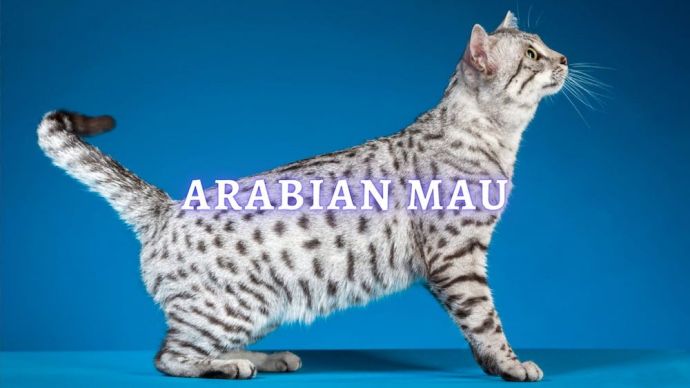 Cat Breeds Arabian Mau: History of Arabian Mau Cats, Personality, Care, Lifespan
Cat Breeds Arabian Mau: History of Arabian Mau Cats, Personality, Care, Lifespan - 965
- 0
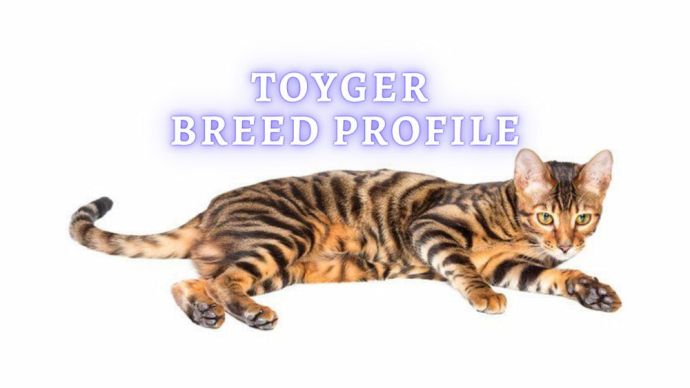 Cat Breeds Toyger Cat: Toy Tiger Cat Breed History, Personality, Adoption, Cost
Cat Breeds Toyger Cat: Toy Tiger Cat Breed History, Personality, Adoption, Cost - 755
- 0
 Cat Care Why Does My Cat Attack My Legs? 10 Reasons Why and What To Do About It (Vet-Approved Advice)
Cat Care Why Does My Cat Attack My Legs? 10 Reasons Why and What To Do About It (Vet-Approved Advice) - 45076
- 21
 Cat Veterinary Tips Cat Stomach Gurgling: Vet Advice on Why is Your Cat Stomach Gurgling?
Cat Veterinary Tips Cat Stomach Gurgling: Vet Advice on Why is Your Cat Stomach Gurgling? - 33727
- 4
 Cat Veterinary Tips My Cat Lost its Voice: Can Cats get Laryngitis? (Vet Advice)
Cat Veterinary Tips My Cat Lost its Voice: Can Cats get Laryngitis? (Vet Advice) - 22889
- 13









